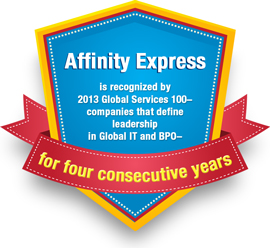Easter Campaigns that Deliver
March 29, 2013 Leave a comment
Every year, when I first hear the clucking of that bunny that brings Cadbury chocolate eggs, I have to smile. Typically, I can restrain myself from racing out to buy a half dozen or so, but I still really like the campaign. As we head into the holiday weekend, I got to thinking: what are the secrets to ads like this that stand the test of time and actually make consumers look forward to seeing them? Our team went through quite a few past and present Easter ads to give you some tips to help you develop strong holiday campaigns for your business.
By the way, beyond candy, the biggest categories of advertisers for Easter are retailers, especially grocery and supermarkets, travel companies, eCommerce sites and movies.
1. Use traditional symbols
Most Easter marketing features pastel colors, dyed eggs, the Easter bunny or, possibly, religious themes. These are all well-recognized symbols of Easter, which give you instant recognition for your promotions. The trick is to pull them off without looking just like everyone else. One way to do this might be to go bright and bold with the eggs or feature your logo in pastels so that your campaigns are distinctly different but equally effective.
For example, you might not think of going to the zoo on during the Easter holiday but Kolner Zoo created a campaign featuring eggs painted with pictures of their unexpected animal contents. It’s eye-catching, clever and attractive.
This imagery in this Pernod Ricard ad is extremely simple but it uses an Easter symbol in red and black rather than pastel.
2. Adapt your characters to embrace themes
On the flip side, you can take the character or mascots you use regularly and have them celebrate the holiday. M&Ms get dressed up in a bunny costume to spread some joy in this ad. The company takes it a step further with a mobile ad campaign that encourages viewers to access recipes that incorporate M&Ms.
 3. Tie in unexpected products and services
3. Tie in unexpected products and services
It’s no surprise that M&M’s jump onto the Easter bandwagon since it is the second most important candy-eating occasion of the year for Americans (we consumed 7 billion pounds of candy in 2011) and M&M-Mars started offering pastel colors in the early 1980s. But you don’t necessarily associate Mercedes-Benz with this holiday. Nevertheless, the company used direct mail to send camouflage-decorated eggs to soldiers who test drove the latest G-Class model, which was very innovative and publicized the good things the auto manufacturer is doing.
 4. Find unusual, holiday-related applications for products
4. Find unusual, holiday-related applications for products
Has the local store run out of those kits for dying eggs? No problem. Pick up some Kool-Aid. It never would have occurred to me that you could use the drink mix to color eggs but this is how the company drives up sales at a time of year when the product is not top-of-mind.
One of the best ways to build positive associations with your brand is to make people laugh. We can all relate to this “chicken” who is exhausted by his work and needs a real holiday.
How about this Schick razor ad that has no copy other than a simple “Happy Easter”? Classic.
Easter is often considered a celebration of renewal and new beginnings, allowing a wide variety of products and services to develop marketing campaigns when the winter chill is transitioning to summer heat. Using this theme opens up possibilities for a wider variety of advertisers, such as spas, beauty products, diet and fitness categories, home and garden stores and more.
What other advice do you have for marketers looking to connect with consumers and stand out on Easter? How do you feel about the Cadbury bunny and are there any other Easter promotions that have stuck with you?
And just in case you were wondering, I’m in the “ears-first” camp!
Interesting Easter Candy Facts
- Ninety million chocolate Easter bunnies are produced each year. According to 76% of Americans, they should be eaten ears first, but 5% said feet first and 4% said tail first.
- In 1953, it took 27 hours to create a Marshmallow Peep. Today, it takes six minutes. Yellow Peeps are the most popular, followed by pink, lavender, blue and white.
- If all the Easter jellybeans were lined up end-to-end, they would circle the globe nearly three times. For kids aged six to 11, 70% say they prefer to eat jellybeans one at a time, while 23% report eating several at once. Boys were more apt to eat a handful than girls.
- Candy is a relatively recent Easter tradition. Chocolate eggs, the most popular Easter candy, were first made in Europe in the early 1800s.
- Pretzels were originally associated with Easter. The twists of a pretzel were thought to resemble arms crossed in prayer.






















